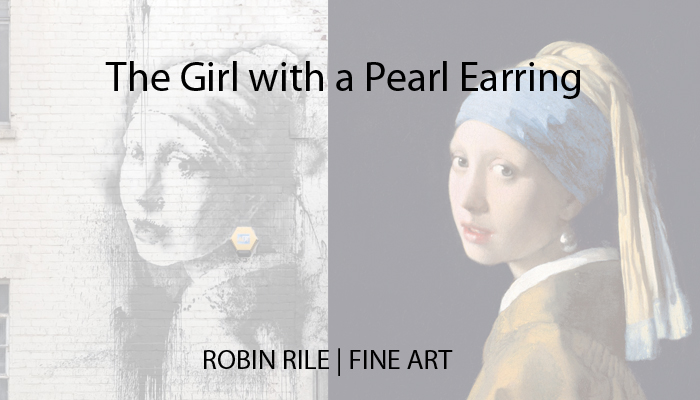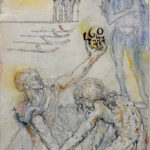
She is small, demure and worth a fortune. Unblinking and thoughtful…. Serene, yet appearing as if she is prepared to speak. Her dewy skin glows palely beneath minute fissures which her age has gifted to her surface. Ever-young and ever-perfect is the vibrant innocence of the “Mona Lisa of the North”, better known as “The Girl with a Pearl Earring” by Dutch master Johannes Vermeer (1632-1675).
What is it about Vermeer that draws audiences from around the world? After all, his paintings typically depict somewhat banal domestic scenes of everyday life in 17th Century Holland. Women sewing, pouring milk, playing music, writing or reading. Men looking at globes or out closed windows. Author Hans Koningsberger writes, “Almost all his paintings are apparently set in two smallish rooms in his house in Delft; they show the same furniture and decorations in various arrangements and they often portray the same people, mostly women.” Natural light streams from the left-side of each composition as if captured on a hazy Polaroid camera. Rarely do they portray scenes of intense drama or literary significance so typical in 17th Century Italian or French paintings and sculpture. So what is it about Vermeer that made him one of the most coveted and valuable artists in history?
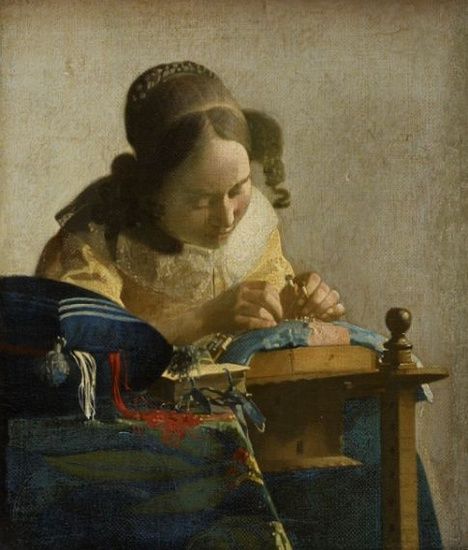
Due in part to Vermeer’s meticulous painting style and slow pace, only approximately 34 signature works are known to exist in the world today. Two-thirds reside in major European museums such as London’s National Gallery, The Rijksmuseum Amsterdam, Paris’ Louvre, and scattered throughout Germany and Scotland. New York’s Metropolitan Museum (4 pieces on display) and Frick Collections (3) as well as the National Gallery in Washington (3) house the works which can be readily seen in the United States.
The dearth of Vermeer on US soil is perhaps due to the influence of attorney Victor de Stuers (1843-1916) who lobbied to keep important works from Dutch artists from being sold to parties outside the Netherlands despite the American thirst for European art at the turn of the 20th Century. Consequently, the Rijksmuseum in Amsterdam was founded due in part to his efforts. Boston’s Vermeer, “The Concert”, was one of many works stolen from the Isabella Stewart Gardner Museum in 1990 in what is perhaps the world’s largest museum heist, valued at over $500M USD. Vermeer’s “The Astronomer” was among the most coveted works stolen by Adolf Hitler during World War II. It was taken from Jewish financier Edouard de Rothschild’s collection in 1941 and loaded onto a train bound for Hitler’s intended Führermuseum in his adopted hometown of Linz, Austria. American “Monument’s Men” (officers trained in Art History sent to protect European treasures from Nazis during WWII) located the painting in an abandoned mineshaft in Altausee, Austria (along with nearly 8000 works from Michelangelo, Jan van Eyck, Rubens, Rembrandt and other masters) and returned it to the owners who sold it to Paris’ Louvre Museum in 1983, where it resides today. Rightly or wrongly, theft adds to the mystery and drama to the history of the world’s rarest masterpieces.
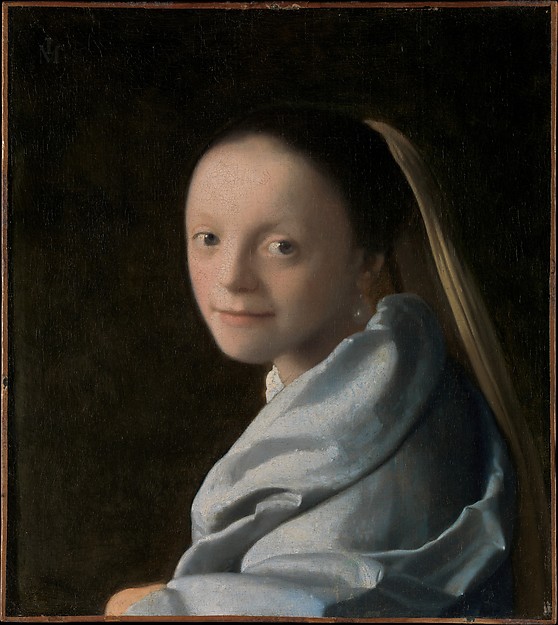
One of only two female portraits on this scale by Vermeer, “Girl with the Pearl Earring” is certainly the more attractive by modern standards (although at the time she would not have been thought of as particularly beautiful). With similar body position, composition and scale, Vermeer’s “Study of a Young Woman” (Metropolitan Museum, NYC) appears sickly and pale, particularly as she is only accented by a gray shawl. Against the dark background common in both works this device was perhaps inspired by Da Vinci’s “A Treatise of Painting” (Trattato della pittura) which stated that a light face on a dark background will appear to be lighter, and vice versa. Her wide-set eyes and flat visage lack the transcendent ideals of beauty which modern audiences have nurtured.
By contrast, “Girl with the Pearl Earring” appears bright and alert against the darkness (which possesses a translucent greenish pigment over a dark background) Vermeer, and adept colorist, uses vibrant ultramarine (made from Lapis Lazuli- a rare and expensive pigment) and lead white to draw attention to the oversized pearl earring at the heart of the composition.
In 1908, Dutch art critic Jan Veth wrote, “More than with any other Vermeer, one could say that [the white] looks as if it were blended from the dust of crushed pearls.” Too large to be drawn from nature, Vermeer instead opted to fictionalize and dramatize the pearl to maximize its effectiveness. A 1994 restoration revealed subtle lighting on the underside which added more weight and dimension to the pearl than was previously known. Yellowed
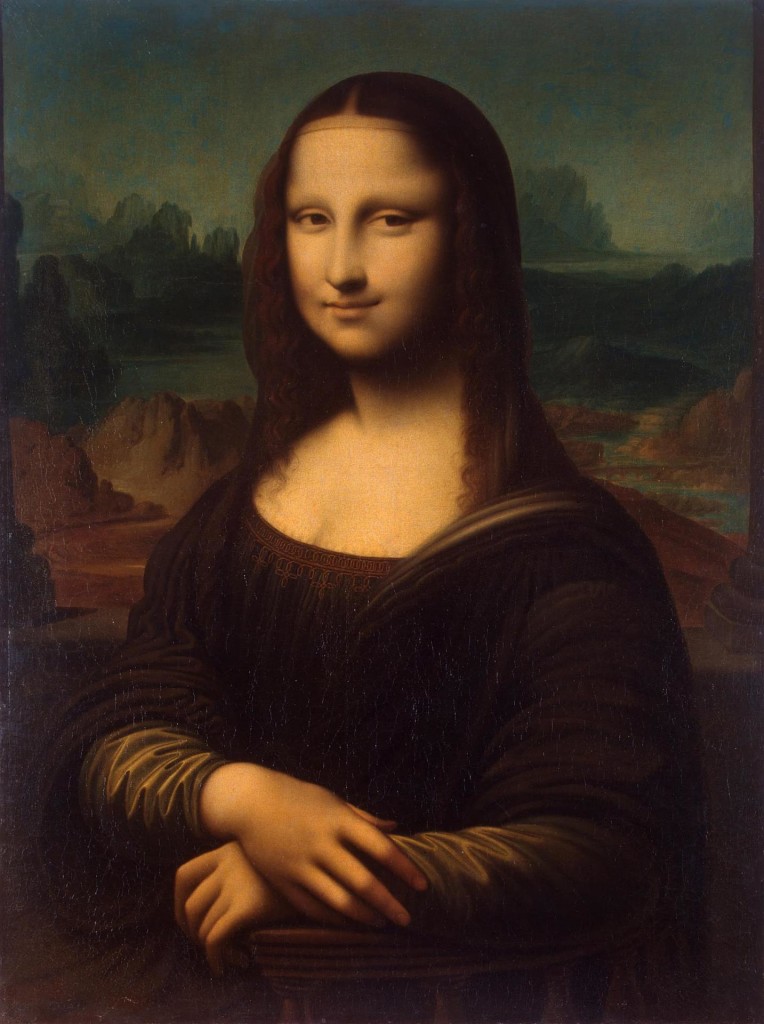
and coarse, her frock lacks embellishment and detail, as does the blue turban. These simplified fields of color emphasize the center of the composition further. Brushstrokes which are more flat and vigorous, combined with a lack of a clear narrative, result that she may be one of the easiest figures in Art History for modern audiences to read and digest.
Perhaps it is, like that of Leonardo DaVinci’s “Mona Lisa”, the mystery of not knowing precisely who she is, although theories abound. To this point, none of Vermeer’s models have been positively and definitively identified. Contrary to the premise of the novel by Tracy Chavalier and eponymous movie starring Scarlet Johansson which depicted her as paramour named Griet, many scholars believe the work to be a study of the artist’s young daughter Maria, aged 12-13 at the time the work was painted. Or perhaps the daughter of his principal patron Pieter Van Ruijven who also had a daughter who fits this description. Other scholars suggest this work to be a “tronie”, a common Dutch art form of the day, utilizing an anonymous sitter with an exaggerated face position used as a natural study. It this sense, the sitter is intended to be unidentifiable, leaving it up to our imaginations as to who she actually is.
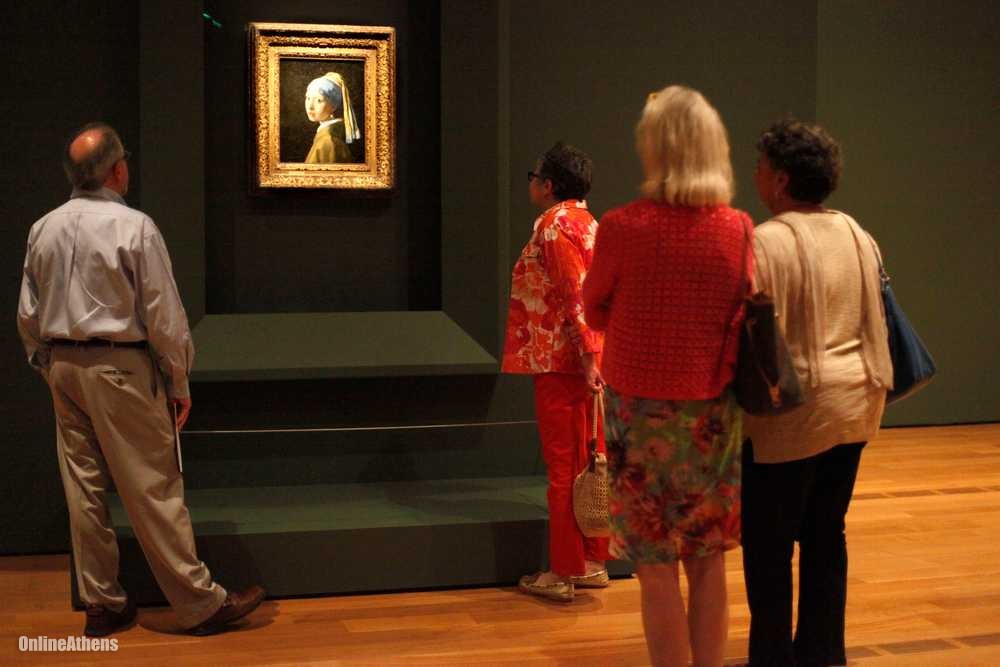
Whatever their motivation, large audiences stood rapt in her gaze during our recent visit to the HIGH MUSEUM OF ART in Atlanta. After slowly perusing the collection of 36 Dutch masterpieces by other luminaries such as Rembrandt, Frans Hals, Jan Steen, Solomon and Jacob van Ruisdael, Meindert Hobemma and others, we entered the vast space occupied by the relatively small portrait by Vermeer. Given the prominence of some of the other works on display, the deference paid to the “Girl with the Pearl Earring” displayed precisely how important this work is for North American audiences. “Paintings of this caliber are underrepresented in this part of the country and this exhibition will create an opportunity for our community to study and admire these works of art that rarely travel outside of Europe”, said Michael E. Shapiro, the Nancy and Holcombe T. Green, Jr. director of
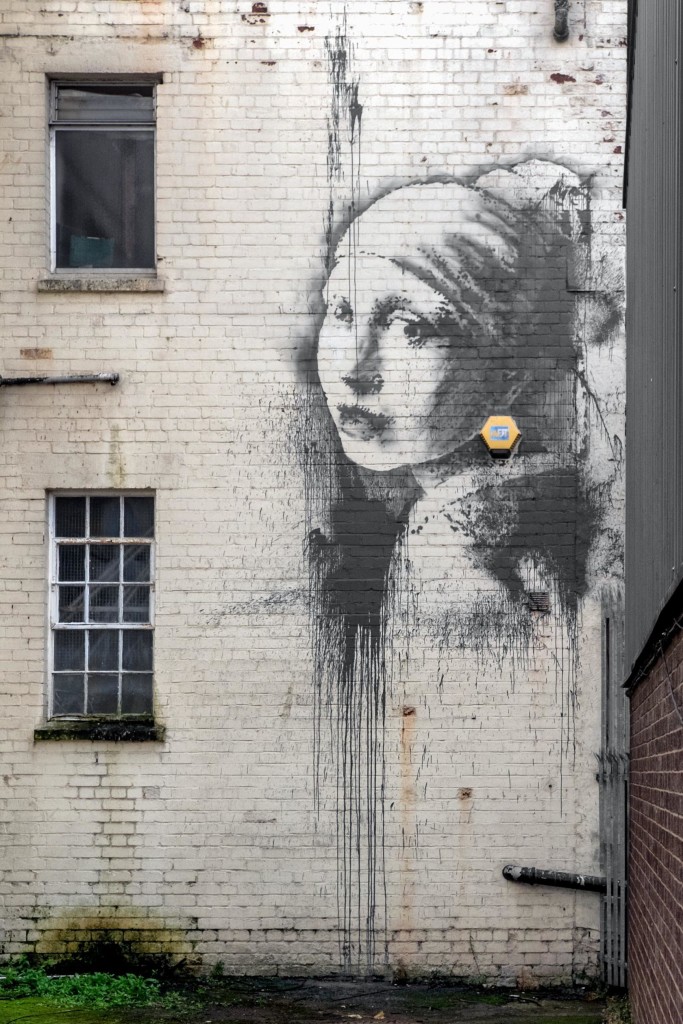
the High Museum.
The portrait sat slightly above eye level in the center of the darkened space. Crowds slowly ebbed close only to flow backwards after drinking her visage in. Curious onlookers leaned precariously over the protective railing to examine the minute brushstrokes and fissures in the canvas as each quietly expressed their admiration.
As I stood in the back of the room it became obvious that everyone had come to see her and her alone. She was a rock star, and we were her groupies, albeit a quiet and deferential lot. For nearly 350 years she has become an object of resplendent desire, mystery and respect. And, perhaps that is why we have come, the pay homage to a rare, valuable and glorious object that may spring into our field of view once in a lifetime…. And to hear what she has to say.
Elusive street artist Banksy stenciled a parody of Vermeer’s work in his dark homage “Girl with a Pierced Eardrum” as seen on the molding brick walls in Bristol, England. Like great 20th century artists such as Andy Warhol, Banksy takes a recognizable image and turns it on it’s ear (drum), making it his own. Unlike Vermeer’s demure work however, this colossal nod to the master features a yellow alarm box instead of a pearl, giving onlookers and perhaps Banksy, a chuckle as the image of this young Dutch beauty has continued to transfix us through the centuries.
Reed V. Horth, is the president, curator and writer for ROBIN RILE FINE ART in Miami, FL. He has been a private dealer, gallerist and blogger since 1996, specializing in 20th century and contemporary masters. www.robinrile.com
All content ©2013 ROBIN RILE FINE ART. Any unauthorized reproduction of images, text or content is strictly prohibited.

